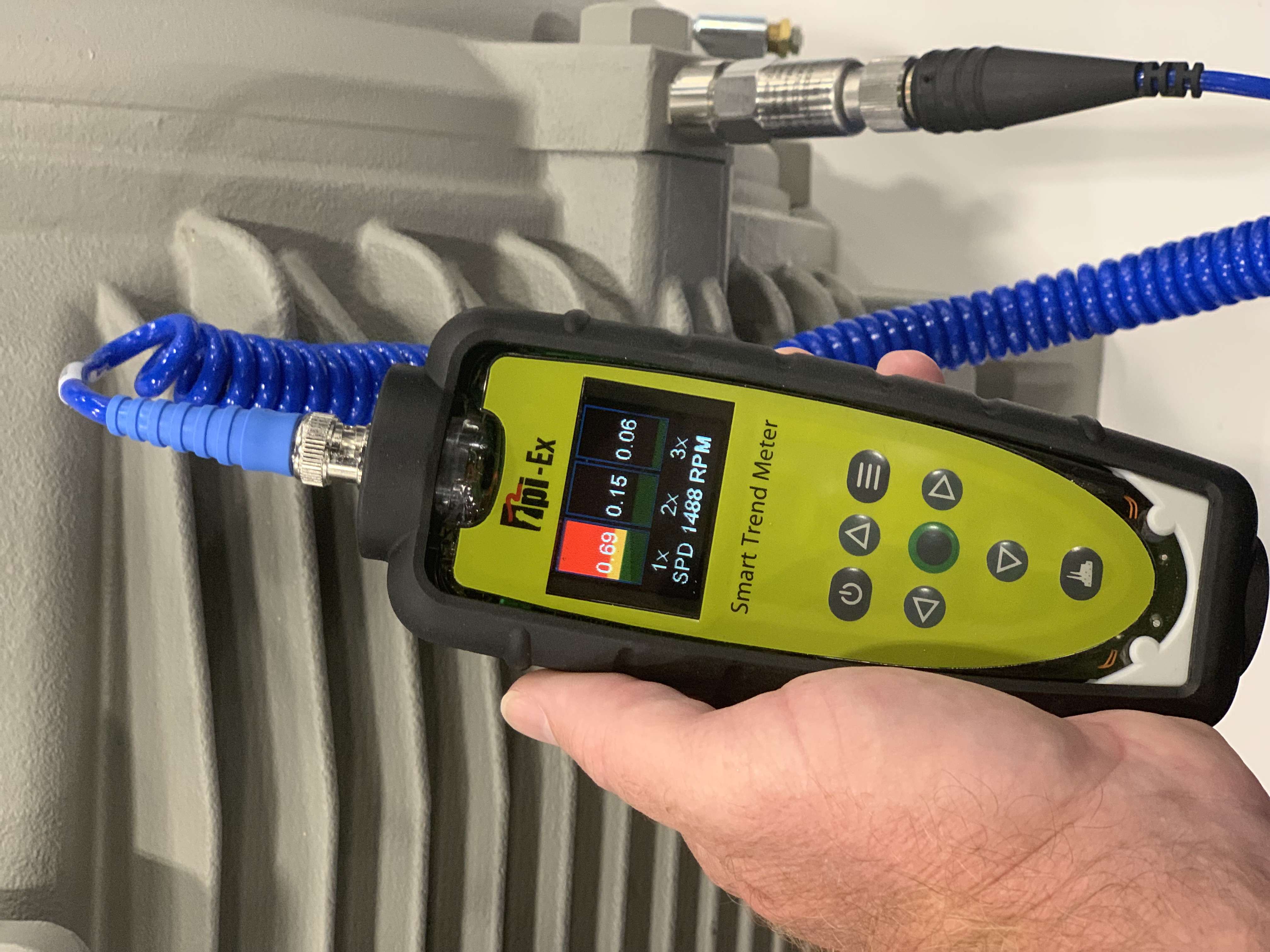It is widely accepted that any electrical equipment for use in Ex hazardous locations needs to be “intrinsically safe” and therefore incapable of igniting an explosive atmosphere. Obvious hazardous locations include flour mills, coal mines, petrochemical plants, fuel transfer facilities etc. However, some not so obvious hazardous locations include wastewater treatment plants or anywhere a build-up of naturally occurring flammable material (such as methane or dust) could occur.
In many of these locations there is a need for condition based monitoring (CBM) equipment, for example to measure the temperature or vibration of rotating machinery. This CBM equipment must therefore be certified as “intrinsically safe”. This is where things can become confusing however, as there are various certification routes. The main one is the International Electrotechnical Commission’s IECEx, which applies Worldwide. However, some regions also require “local” approval, such as the EU’s ATEX (Atmospheres Explosives) certification. Although this is basically an additional layer of bureaucracy on top of IECEx and the two are effectively identical. However, North American approval (USA & Canada) can appear slightly different, as explained below.
The whole concept of intrinsic safety is based on probabilities, including the likelihood of an explosive atmosphere existing in the first place. For IECEx & ATEX this is dealt with by the definition of the following zones, which put very simply, define the probability of an explosive atmosphere existing as: Zone 0: most of the time, Zone 1: occasionally and Zone 2: not very often. The North American system has previously used a classification system known as NEC500 that defines Class 1, Division 1 (equivalent to Zones 0 & 1) and Class 1, Division 2 (equivalent to Zone 2). However, this is gradually being replaced by NEC505 that uses identical zones to IECEx & ATEX.
The concept of intrinsic safety being based on probabilities is taken a stage further whereby equipment suitability for use in hazardous locations is based on the probability of a fault occurring:

Test Products International (TPI) believes it has greatly simplified things with the triple certification of its very affordable TPI 9080Ex Smart Vibration Analyser. The TPI 9080Ex is IECEx/ATEX certified for Zone 1 and North American approved for Class 1, Zone 1 and hence certified for use in hazardous locations anywhere in the world.
The TPI 9080Ex uses industry standard BNC connected intrinsically safe accelerometers and offers on-meter analysis for detection of machine faults such as unbalance, misalignment, looseness and bearing wear. With full colour OLED display and Bluetooth communications, the TPI 9080Ex features colour coded alarms and zoomable on-screen vibration frequency plots with cursor readout. It can store lists (routes) of up to 1000 machines, each with up to 10 measurement points, with full waveform and frequency spectrum (FFT) capture.
The included free-to-use VibTrend PC-based trending and reporting software features high-end benefits such as automatic email notification of alarms and report generation to implement a full CBM strategy. Routes and readings can easily be transferred to/from the TPI 9080 via Bluetooth using a smart phone or tablet running the free TPI Cloud Bridge App. This allows service personnel to receive and return VibTrend routes and readings, no matter where they are in the world.
In-line with TPI’s philosophy of being the value leader, the TPI 9080Ex is available at the incredibly low list price of only £3,500.
For more information please contact TPI Europe’s head office on +44 1293 530196 or take a look on the website at www.tpieurope.com or email This email address is being protected from spambots. You need JavaScript enabled to view it.


